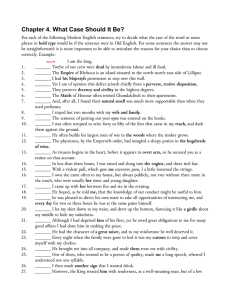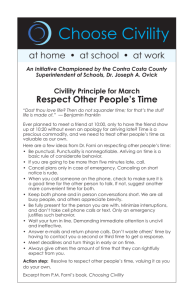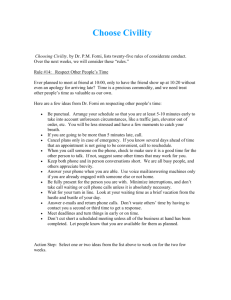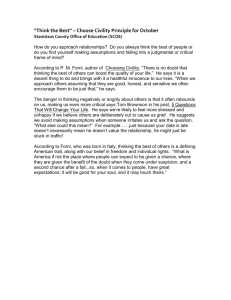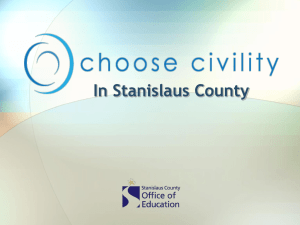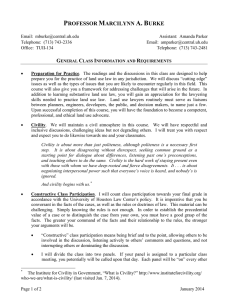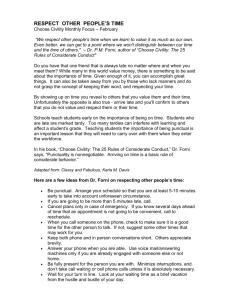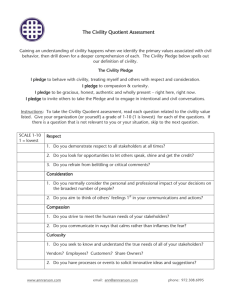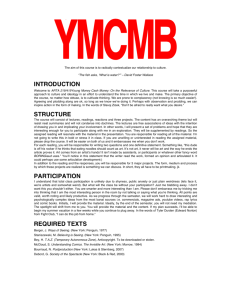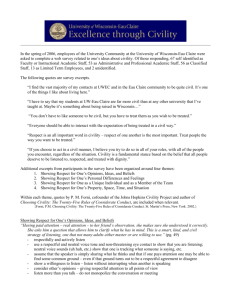Civility project
advertisement
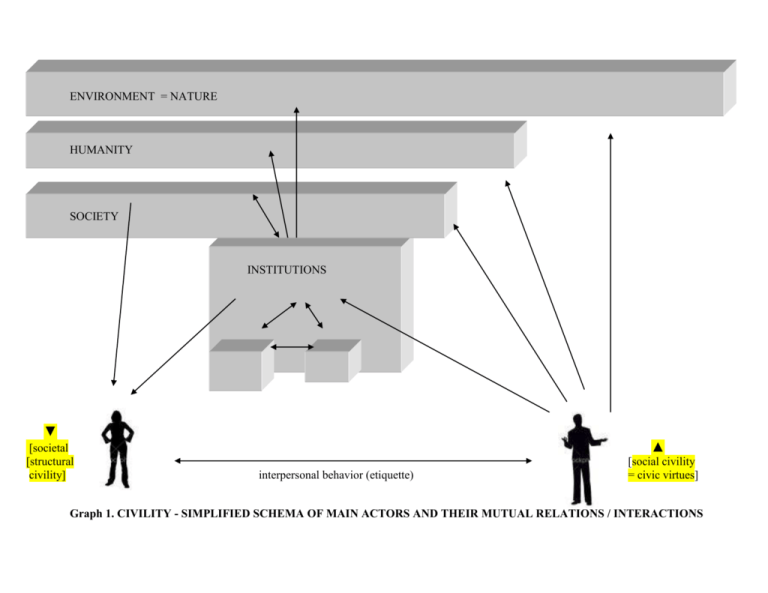
ENVIRONMENT = NATURE HUMANITY SOCIETY INSTITUTIONS ▼ [societal [structural civility] ▲ interpersonal behavior (etiquette) [social civility = civic virtues] Graph 1. CIVILITY - SIMPLIFIED SCHEMA OF MAIN ACTORS AND THEIR MUTUAL RELATIONS / INTERACTIONS Ad Graph 1. Civility can be in simplified way illustrated by interactions among the main actors in horizontal and vertical directions: Horizontal interactions include behaviors between individuals (e.g. behavior of people who wait for a bus, interaction of drivers and pedestrians) conduct among institutions (e.g., competition among companies) interactions among societies (e.g., conflict resolution styles between nations) Vertical interactions involve parties on different social levels and can be (for purpose of simplification) divided into two kinds: ascending ▲ social civility where action is initiated from below and reaches up to higher social entities. behavior of an individual to an institution (work ethics toward one’s employer, stealing from a store) or of an individual to the society (tax payers honesty, cheating on health insurance from state health insurance company) or of an institution to the society (respecting or cheating on regulations) in more abstract terms we can also consider conduct that respects or disrespects humanity and environment descending ▼ = action is initiated above and is directed down conduct of the society to the citizens (arrangement of the legal system - namely civil rights and economic laws – level of taxation, welfare, consumer rights for the inhabitants, public notices and their form) conduct of the institutions toward the citizens (public relations, law enforcement practices, level of trust to customers etc.) conduct of the society toward the institutions (bureaucratic regulations) Table 1. CIVILITY (or rudeness) – Examples of interactions and operationalizations CIVILITY descending ▼ = from above down SOCIETAL laws and their enforcement Political laws (civil rights and liberties- assessed by Freedomhouse) Economic (level of taxation, welfare system) Arrangements for the handicapped – access on sidewalk, to public buildings, INSTITUTIONAL regulations and practices (how good are consumer rights for customers, how safe is food in restaurants, how careful is post-office about safe and honest delivery of mail, how friendly toward people are traffic regulations – lethality of traffic, speed limits) Corruption level (Transparency international) Public relations, removal of benches from cities so homeless would not settle on them Willingness to respond to citizens ascending ▲ = from below up Corruption (assessed by Transparency international) [corruption includes interaction of both parties] Environmental regulations, recycling Willingness of people to vote for taxes and pay them Honesty of people toward institutions Shoplifting Illegal copying of software INTERPERSONAL LEVEL Etiquette (gentle and compassionate or rough inconsiderate talk and conduct) Behavior toward the handicapped – letting them sit down in means of public transport. Mutual behavior of people in situation of scarcity (waiting for bus, in lines, drivers competing for the right of way)
